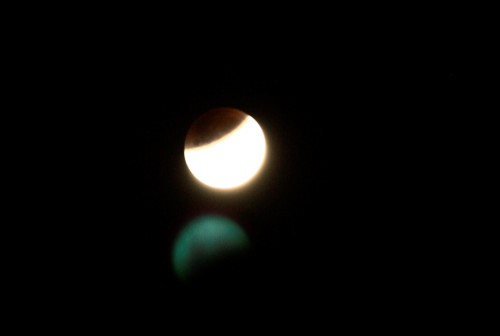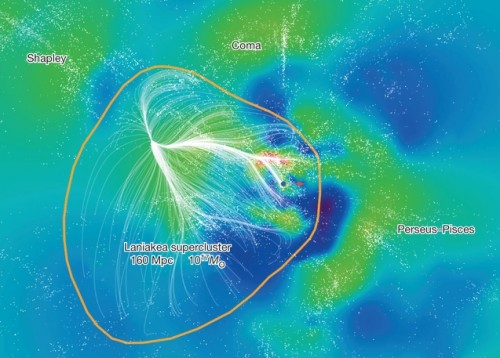Tag archives: astronomy
The November 2015 issue of Physics World is out now
By Matin Durrani
Whether it’s the shortest wavelength, the lightest particle, the highest pressure or the brightest beam, there’s something intrinsically appealing about pushing boundaries to break records and establish new limits of what’s physically possible. Reaching new extremes is healthy for science too, spurring researchers to outperform rivals in the quest for grants, kudos or new jobs.
The November 2015 issue of Physics World, which is now out, covers three frontier-busting research endeavours. We kick off by looking at a human-made extreme: the search for the blackest materials ever produced – a tale that’s had a dark side of its very own. Next, we examine how physics techniques are unravelling the secrets of tough lifeforms that exist in some of the most extreme environments on Earth. Finally, we go beyond Earth to a cosmic extreme: magnetars – a special kind of rotating neutron star that are the strongest magnets in the universe.
Quantum cats, physicists and stamp collecting, extraterrestrial building work

Calculating cat: Schrö makes her way through a quantum computer. (Courtesy: IQC)
By Hamish Johnston
The Internet loves cats and our readers love quantum mechanics so a new mobile app called Quantum Cats just has to be the lead item in this week’s Red Folder. Created by physicists at the Institute for Quantum Computing and researchers at the University of Waterloo Games Institute, the app immerses the user in the adventures of four cats: Classy, who obeys classical physics; Digger, who is a master of quantum tunnelling; Schrö, (above) who is a superposition of quantum states; and Fuzzy, who embodies the uncertainty principle. It’s available on Google Play and the App Store, so have a go and tell us what you think.
View all posts by this author | View this author's profile
Disaster-proof astronomy?

The Atacama Large Millimeter/submillimeter Array (ALMA) on the Chajnantor Plateau in Chile. (Courtesy: Clem & Adri Bacri-Normier/ESO)
By Louise Mayor in San Pedro de Atacama, Chile
In many ways, the Chajnantor Plateau in the Chilean Andes seems like one of the worst places in the world to build a very large and expensive telescope array. I have already experienced or witnessed first-hand a host of hazards on my trip to the Atacama Large Millimeter/submillimeter Array (ALMA), which is my reward for winning the European Astronomy Journalism Prize 2014.
At 2.39 a.m. local time last Monday, I was rudely reminded that I was in a tectonically active region by a magnitude-6.3 earthquake. At the time, I was staying overnight in Santiago, with two flights down and one to go on my way to the ALMA site in the Atacama Desert further north.
View all posts by this author | View this author's profile
Blood Moon at night, stargazers’ delight
By Tushna Commissariat
I am rather tired as I type up this post, but I do have an excellent excuse for being so sleepy today as I was awake until the wee hours of the morning watching the “super blood Moon” eclipse. As most of you know, today’s eclipse was particularly impressive as a super Moon (when the Moon is at its closest point to the Earth) coincided with a total lunar eclipse – when the Earth is perfectly in-between the Sun and Moon.
Rather unusually for the UK, we (in and around Bristol, at least) had a crystal-clear night, devoid of any clouds. I set up camp in my backyard, armed with a pair of binoculars, my camera with a zoom lens (but, unfortunately, no tripod) and a hot cup of tea…or two!
Despite the cold bite of an autumn night, the Moon really was a sight to behold. Before the eclipse, the super Moon was so bright that I could hardly look at it through my binoculars.

The full “super Moon” at around 10 p.m. BST, a few hours before the eclipse began. (Courtesy: Graeme Watt)

The Moon partially eclipsed, not quite bloody just yet, with a lunar flare. (Courtesy: Tushna Commissariat)
View all posts by this author | View this author's profile
Our true place in the universe, an eclipse for insomniacs and how far the Chilean landmass moved last week
By Tushna Commissariat
An image of the solar system – showing our luminous Sun ringed by nine (or is it eight?) evenly spaced planets and the asteroid belt – is a familiar feature in many school textbooks. In fact, such images are so commonplace that we often forget just how wrong they are when it comes to showing the true scale of the solar system. In particular, the billions and billions of kilometres of empty space that lie between each planet are rarely depicted.
Now, filmmakers and friends Wylie Overstreet and Alex Gorosh have “drawn” a realistic model of the solar system on a dry Nevada lakebed, complete with planetary orbits. The duo describes it as “a true illustration of our place in the universe”. Watch the video above to see how the pair planned and executed their massive portrait.
View all posts by this author | View this author's profile
Time to claim the Chilean prize
By Louise Mayor in Santiago, Chile
When I got to immigration at Santiago airport in Chile this morning, the man behind the glass asked me whether I was here for business or pleasure. “Business,” I replied. But that word didn’t sit right with me. To me, the word “business” conjures the image of some dull suit-and-briefcase affair. But I’m here to go to the Atacama Large Millimeter/submillimeter Array (ALMA) as my reward for winning the European Astronomy Journalism Prize 2014, and I’ve been thinking of it as quite the once-in-a-lifetime treat. “Perhaps,” I thought to myself in those split-seconds following my reply, “my trip does fall under ‘pleasure’ after all?”
Not one to mislead immigration officers, I immediately wanted to clarify the situation. “Well,” I added, “er,” before quickly realizing that changing one’s answer at the immigration counter is perhaps not the best idea. The man then stopped his document-checking and looked at me square-on, fixing me with an intense gaze. “Why are you here?” he asked.
View all posts by this author | View this author's profile
Physics World special report on Mexico is out now
By James Dacey
Today is Mexico’s Independence Day, marking the Grito de Dolores – the day in 1810 when the Roman Catholic priest Miguel Hidalgo called on his congregation in the small Mexican town of Dolores to revolt against the Spanish colonial government. This “Cry of Dolores” is seen as the flash point that triggered the Mexican War of Independence.
Modern-day Mexico is still a place with its fair share of turmoil, as the government faces increasing pressure over its inability to deal with drugs, violence and corruption. One area that is starting to look more positive, however, is Mexico’s science base – the administration of president Enrique Peña Nieto has vowed to double Mexico’s investment in science and technology to 1% of GDP and has already sanctioned increases in 2013 and 2014.
To shine a light on what the Mexican physics community is up to, this month sees the publication of a new free-to-read Physics World special report on physics in Mexico. We believe that physicists in Mexico are doing engaging work that deserves to be more widely known. In choosing our coverage for the report, we have not only focused on the challenges for the Mexican community, but also hope to give you a flavour of the rich culture and geography of this most colourful of countries.
How to treat your inner geek
By Matin Durrani
The word “geek” used to be a bit of insult, but to be labelled a geek these days isn’t such a bad thing after all. I think a lot of that’s due to the sheer power and pervasiveness of smartphones, software and IT — in fact, the top definition of “geek” over at Urban Dictionary is “The people you pick on in high school and wind up working for as an adult.” I also reckon the huge popularity of TV’s The Big Bang Theory has played its part in the reversal of fortune of the word, with many of us following the stories of Sheldon, Leonard and their geeky physics pals.
View all posts by this author | View this author's profile
Moving meridians, Stradivarius violins, sunspots and more

Walk the line: Airy meridian is marked as the “Prime Meridian of the World” (dotted line), and the modern reference meridian indicating zero longitude using GPS (solid line).
(Courtesy: 2014 Google Maps, Infoterra & Bluesky)
By Tushna Commissariat
A visit to the Royal Observatory in Greenwich is incomplete without walking along the Prime Meridian of the world – the line that literally divides the east from the west – and taking some silly photos across it. But you may be disappointed to know that the actual 0° longitudinal line is nearly 100 m away, towards the east, from the plotted meridian. Indeed, your GPS would readily show you that the line actually cuts through the large park ahead of the observatory. I, for one, am impressed that the original line is off by only 100 m, considering that it was plotted in 1884. A recently published paper in the Journal of Geodesy points out that with the extreme accuracy of modern technology like GPS, which has replaced the traditional telescopic observations used to measure the Earth’s rotation, we can measure this difference. You can read more about it in this article in the Independent.
View all posts by this author | View this author's profile
How flowing galaxies revealed the immensity of the Laniakea Supercluster

In this 2D slice of the supergalactic equatorial plane, the boundary of Laniakea is the closed orange curve. The white lines are velocity-flow curves where red denotes areas of high density and blue shows low density. The Milky Way is the black dot on the right-hand side of Laniakea. (Courtesy: Brent Tully et al./Nature)
By Brent Tully at the International Astronomical Union General Assembly in Honolulu, Hawaii
We know that we live on a planet in a solar system in a galaxy in a group of galaxies. But what do we know about our location in the universe beyond that? Some astronomers would answer that we live in the “Local” or “Virgo” supercluster of galaxies. However, the concept has been vague. In the interconnected “cosmic web” it has not been clear where one dense region of galaxies ends and another begins.
Rather than just looking at the distribution of galaxies, it is instructive to consider the motions of galaxies with respect to each other. On the grand scale, galaxies are flying apart from each other with the expansion of the universe. We have to cancel out that motion to see the residual “peculiar” velocities of galaxies that arise from local gravitational attractors.
View all posts by this author | View this author's profile
